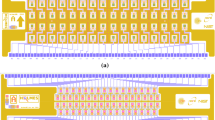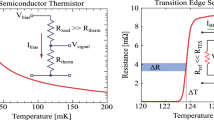Abstract
The assessment of the absolute \(\nu\) mass scale is a crucial challenge in today’s particle physics and cosmology. The only experimental method which can provide a model-independent measurement is the investigation of endpoint distortion in beta/electron capture spectra. \(^{163}\)Ho is a good choice thanks to its low electron capture Q value (about 2.8 keV), the proximity of the end-point to resonance M1 and its half-life (4570 years). The HOLMES experiment will exploit a calorimetric measurement of \(^{163}\)Ho decay spectrum deploying a large set of cryogenic micro-calorimeters containing implanted \(^{163}\)Ho. In order to get the best experimental sensitivity, it is crucial to combine high activity with very small undetected pileup contribution. Therefore, the main tasks of the experiment consist of: the development of about 1000 fast (3 \(\mu\)s time resolution) cryogenic micro-calorimeters characterized by extraordinary energy resolution (down to few eV); the embedding of \(^{163}\)Ho source inside the calorimeters, avoiding to spoil detectors’ thermodynamical properties (mainly heat capacity) and preventing pileup issues. Moreover, it is also necessary to avoid contamination from other radionuclides, mainly \(^{166m}\)Ho. Finally, an efficient high-bandwidth multiplexed readout has to be developed. The commissioning of the first implanted array is currently ongoing; the first data acquisition is expected to start in fall 2022. Here, the status of the experiment and the first results of detector commissioning will be discussed.




Similar content being viewed by others
References
A. Nucciotti, Adv. High Energy Phys. 2016, 9153024 (2016)
A. De Rujula, M. Lusignoli, Phys. Lett. B 118, 429 (1982)
S. Eliseev et al., Phys. Rev. Lett. 115, 062501 (2015)
A. Nucciotti et al., HOLMES collaboration. Eur. Phys. J. C 75, 112 (2015)
M. Borghesi et al., Eur. Phys. J. C 81, 385 (2021)
O. Kawakami et al., Phys Rev C. 38(4), 1857–60 (1988)
S. Heinitz et al., PLoS one 13(8), e0200910 (2018)
http://www.nucleide.org/DDEP_WG/Nuclides/Ho-166m_tables.pdf
M. De Gerone et al. J. Low Temp. Phys. This Special Issue (2021)
http://www.srim.org/
J.A.B. Mates et al., Appl. Phys. Lett. 92(2), 023514 (2008)
J.A.B. Mates et al., J. Low Temp. Phys. 167(5), 707 (2012)
S. McHugh et al., Rev. Sci. Instrum. 83, 044702 (2012)
A. Giachero et al., IEEE Trans. Appl. Supercond. 31, 5 (2021)
Acknowledgements
This work was supported by the European Research Council (FP7/2007-2013), under Grant Agreement HOLMES No. 340321, and by the INFN Astroparticle Physics Commission 2 (CSN2). We also acknowledge the support from the NIST Innovations in Measurement Science program for the TES detector development.
Author information
Authors and Affiliations
Corresponding author
Ethics declarations
Conflict of interest
The data supporting the findings of this study are available from the authors on request.
Additional information
Publisher's Note
Springer Nature remains neutral with regard to jurisdictional claims in published maps and institutional affiliations.
Rights and permissions
Springer Nature or its licensor (e.g. a society or other partner) holds exclusive rights to this article under a publishing agreement with the author(s) or other rightsholder(s); author self-archiving of the accepted manuscript version of this article is solely governed by the terms of such publishing agreement and applicable law.
About this article
Cite this article
De Gerone, M., Alpert, B., Balata, M. et al. Status of the HOLMES Experiment. J Low Temp Phys 209, 980–987 (2022). https://doi.org/10.1007/s10909-022-02895-6
Received:
Accepted:
Published:
Issue Date:
DOI: https://doi.org/10.1007/s10909-022-02895-6




